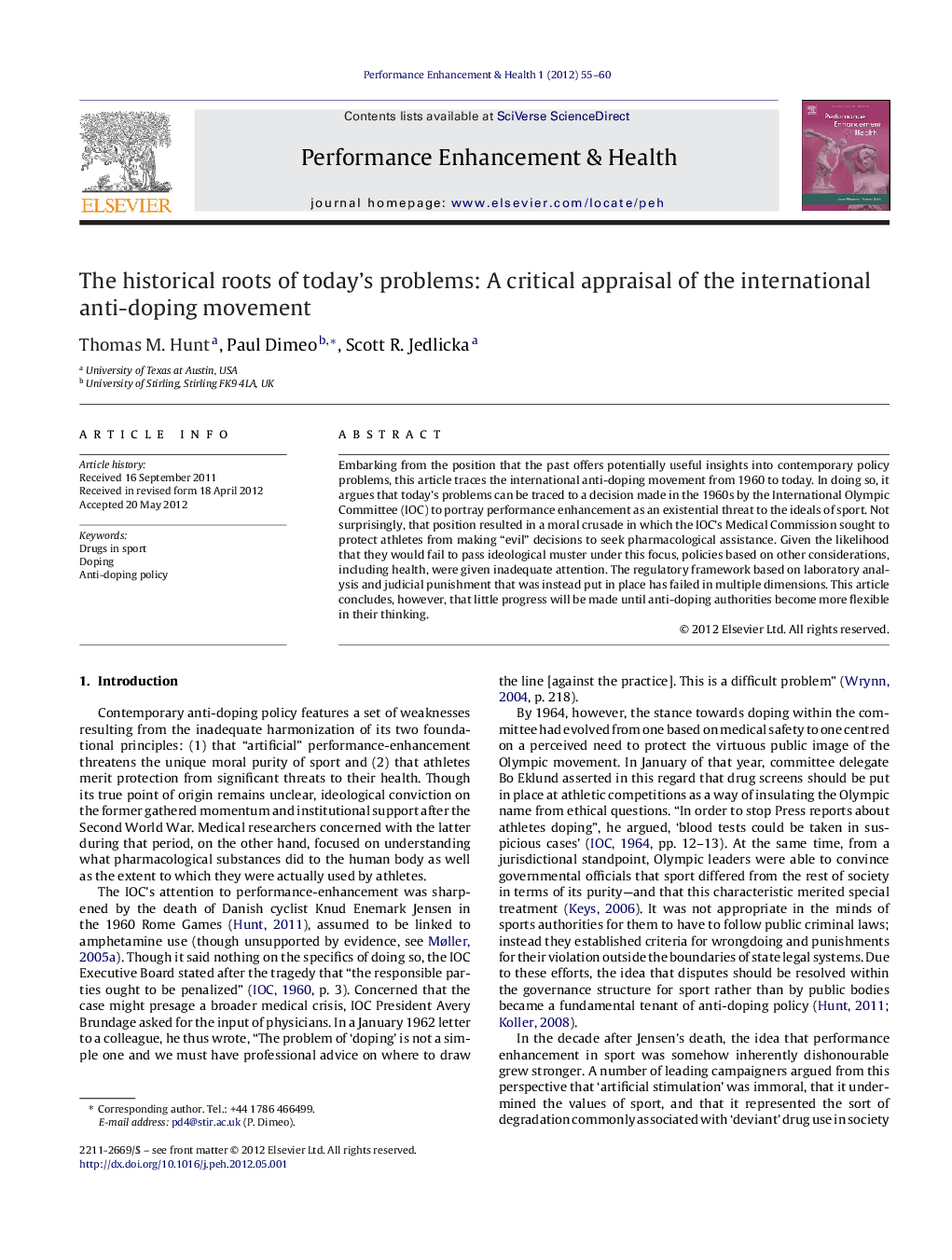| Article ID | Journal | Published Year | Pages | File Type |
|---|---|---|---|---|
| 889608 | Performance Enhancement & Health | 2012 | 6 Pages |
Embarking from the position that the past offers potentially useful insights into contemporary policy problems, this article traces the international anti-doping movement from 1960 to today. In doing so, it argues that today's problems can be traced to a decision made in the 1960s by the International Olympic Committee (IOC) to portray performance enhancement as an existential threat to the ideals of sport. Not surprisingly, that position resulted in a moral crusade in which the IOC's Medical Commission sought to protect athletes from making “evil” decisions to seek pharmacological assistance. Given the likelihood that they would fail to pass ideological muster under this focus, policies based on other considerations, including health, were given inadequate attention. The regulatory framework based on laboratory analysis and judicial punishment that was instead put in place has failed in multiple dimensions. This article concludes, however, that little progress will be made until anti-doping authorities become more flexible in their thinking.
